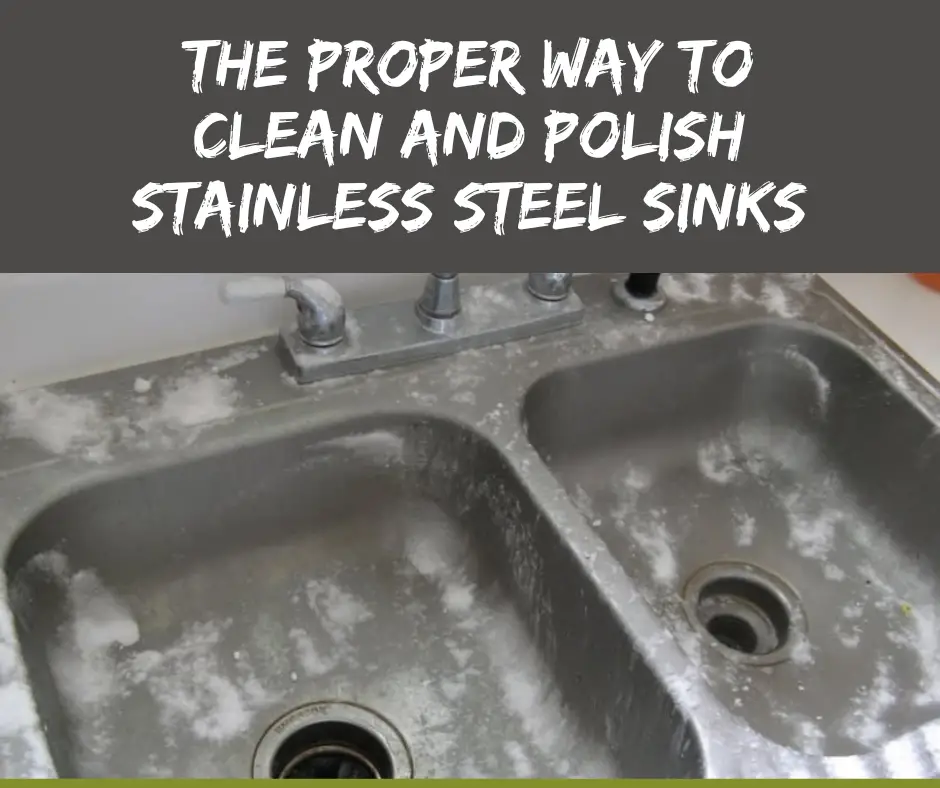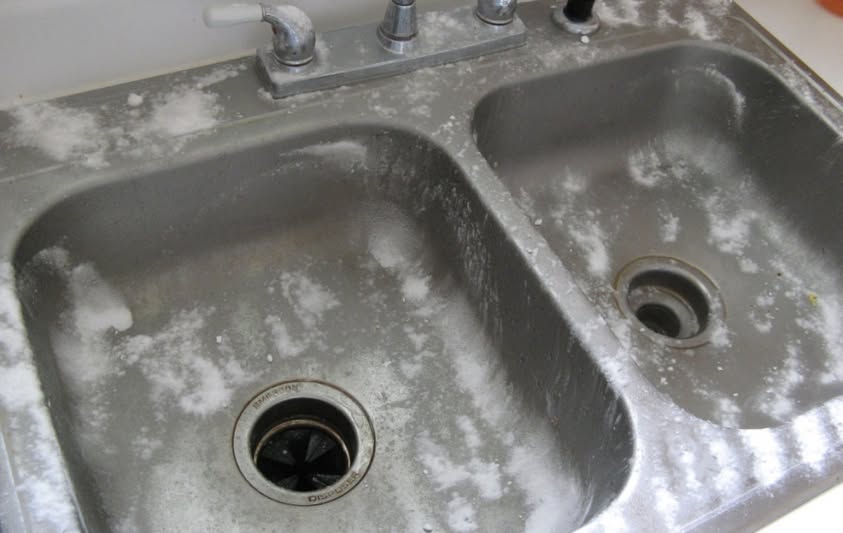A shiny, clean stainless steel sink can elevate the look of your kitchen while ensuring cleanliness and hygiene. This article dives into the proper way to clean and polish stainless steel sinks, providing you with expert tips, cleaning techniques, and useful maintenance suggestions.
Stainless steel sinks are durable, but without proper cleaning and care, they can lose their shine and develop stains. Fortunately, there are effective ways to restore and maintain their appearance. Whether you are dealing with food stains, water spots, or grease buildup, the right techniques can help you preserve the beauty and functionality of your sink. Read on to discover everything you need to know about cleaning and polishing your stainless steel sink.
Why Cleaning and Polishing Stainless Steel Sinks is Essential
Stainless steel is an alloy made of iron, chromium, and other metals. The chromium creates a protective layer that prevents rust and corrosion. However, this layer can be damaged by improper cleaning, harsh chemicals, or abrasive cleaning tools. Regular cleaning and polishing not only help maintain the aesthetic appeal of your sink but also contribute to its longevity.
The proper way to clean and polish stainless steel sinks is essential for several reasons:
- Prevents Damage: Improper cleaning can scratch or dull the surface, making your sink more vulnerable to stains and damage over time.
- Improves Appearance: Cleaning and polishing bring out the natural shine of stainless steel, keeping your kitchen looking fresh and modern.
- Health and Hygiene: A well-maintained sink reduces the buildup of bacteria and grime, ensuring that your kitchen remains hygienic.
- Protects the Surface: Regular polishing forms a protective barrier that helps your sink resist staining and discoloration from food and water.
By learning how to properly clean and polish your stainless steel sink, you’ll avoid these issues and maintain a sink that’s as functional as it is attractive.
The Shocking Truth About the Proper Way to Clean Stainless Steel Sinks
Many people make the mistake of using harsh chemicals or abrasive scrubbers to clean their stainless steel sinks. While these might seem like quick solutions, they can often cause more harm than good. The reality is, using the wrong cleaning methods can leave scratches, damage the protective layer, or cause discoloration.

To clean your stainless steel sink effectively, it’s crucial to understand the following:
- Avoid Abrasive Scrubbers: Harsh scouring pads or steel wool can leave deep scratches, causing the surface to look worn and dull.
- Say No to Harsh Chemicals: Products containing bleach, chlorine, or ammonia can damage the finish and weaken the protective layer of stainless steel.
- Use Mild Cleaners: A mixture of water and a mild dish soap or a specialized stainless steel cleaner is often sufficient to remove dirt and grime without harming the sink.
Proper maintenance, however, goes beyond just cleaning. Polishing your sink can help restore its shine and protect it from future damage. There are several cleaning solutions that work wonders for stainless steel sinks, and the right techniques will help preserve your sink’s beauty.
How to Clean Stainless Steel Sinks: The Step-by-Step Process
Cleaning your stainless steel sink is a straightforward process when done correctly. Here’s a detailed guide on how to clean your sink without damaging its finish:
Step 1: Gather Your Supplies
Before you start cleaning, gather the following materials:
- Mild dish soap
- Warm water
- Soft microfiber cloth or sponge
- Baking soda (for tough stains)
- White vinegar (optional)
- Specialized stainless steel cleaner (optional)
Step 2: Rinse the Sink
Start by rinsing your stainless steel sink with warm water to remove any loose debris. This ensures that you won’t scratch the surface when you begin scrubbing.
Step 3: Apply Mild Dish Soap
Using a soft microfiber cloth or sponge, apply a small amount of mild dish soap mixed with warm water. Gently scrub the sink, focusing on areas with visible stains or grease buildup. Avoid using any abrasive tools that could scratch the surface.
Step 4: Tackle Stubborn Stains
If you encounter stubborn stains, create a paste using baking soda and water. Apply it directly to the stain and let it sit for a few minutes before scrubbing gently with a soft sponge. Alternatively, you can use a mixture of white vinegar and water to help dissolve mineral deposits and soap scum.
Step 5: Rinse and Dry
Once the sink is clean, rinse it thoroughly with warm water to remove any soap residue. Dry the surface immediately with a clean microfiber cloth to prevent water spots from forming.
By following these steps, you can maintain a clean and polished sink without damaging the surface.
The Importance of Polishing Stainless Steel Sinks
Once your stainless steel sink is clean, it’s time to polish it to restore its shine. Polishing not only enhances the aesthetic appeal of your sink but also provides a protective barrier against future stains and water spots.
How to Polish Your Sink
- Use a Specialized Cleaner: There are many commercial stainless steel cleaners available that are designed to add a layer of polish and protection to your sink. These cleaners often contain oils or waxes that help repel water and stains.
- DIY Polishing: If you prefer a natural method, you can create your own polishing solution by mixing a small amount of olive oil or mineral oil with a few drops of vinegar. Apply the solution to a microfiber cloth and rub it in a circular motion across the sink’s surface.
- Buff the Sink: Once the solution is applied, use a clean, dry microfiber cloth to buff the surface gently. This will remove any excess polish and enhance the shine.
- Follow the Grain: When polishing, always rub along the grain of the stainless steel to avoid scratching the surface.
Expert Tips to Maintain Your Stainless Steel Sink
To keep your sink looking brand new, consider these expert tips:
- Clean Spills Immediately: Avoid leaving acidic substances like lemon juice, vinegar, or tomato sauce on the sink for long periods. These can cause discoloration if not cleaned promptly.
- Use a Sink Protector: Consider using a sink protector or a mat to prevent scratches caused by pots, pans, and utensils.
- Dry After Use: After each use, dry your sink with a microfiber cloth to prevent water spots and mineral deposits from forming.
- Routine Maintenance: Clean your sink regularly to prevent dirt buildup. A quick wipe-down once a day can keep it looking pristine.
The Biggest Mistakes People Make with Stainless Steel Sink Maintenance
While cleaning and polishing your stainless steel sink is relatively simple, there are common mistakes that can cause long-term damage. Here are a few things to avoid:
- Using Harsh Chemicals: As mentioned earlier, chemicals like bleach or ammonia can strip the protective layer of stainless steel, leaving it vulnerable to damage.
- Scrubbing with Abrasive Tools: Steel wool or abrasive pads can scratch the surface, leaving behind permanent marks.
- Neglecting to Dry: Leaving water on the sink’s surface can cause water spots and mineral deposits, especially in hard water areas.
- Polishing Too Often: While polishing is important, over-polishing can lead to a buildup of residue, which may dull the surface over time.
Final Thoughts: Why You Should Try the Proper Way to Clean and Polish Stainless Steel Sinks
Maintaining a clean and polished stainless steel sink is simple when you use the proper techniques. By following the cleaning and polishing steps outlined above, you can preserve the shine and beauty of your sink for years to come. Regular care not only enhances the aesthetic value of your kitchen but also contributes to a hygienic environment.
Make sure to use mild cleaning products, avoid harsh chemicals, and polish your sink regularly to keep it looking its best. With just a little time and effort, you can enjoy a gleaming, spotless sink that serves as a centerpiece in your kitchen.
For more interesting tips you can see here www.sotastyrecipe.com/tips
And for recipes lovers, you can check my friend’s blog here www.infloin.com
